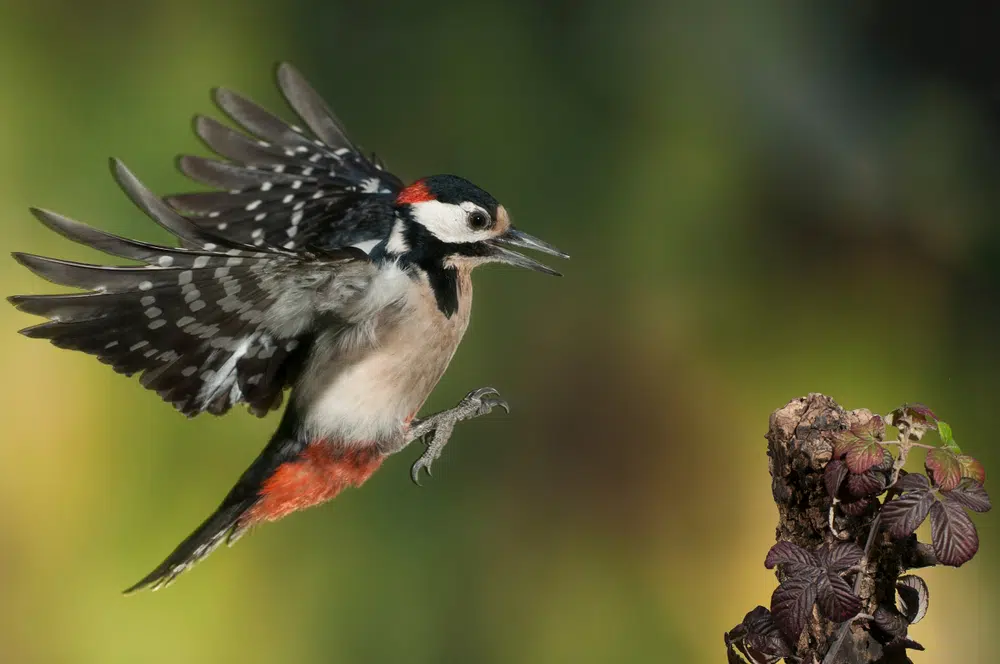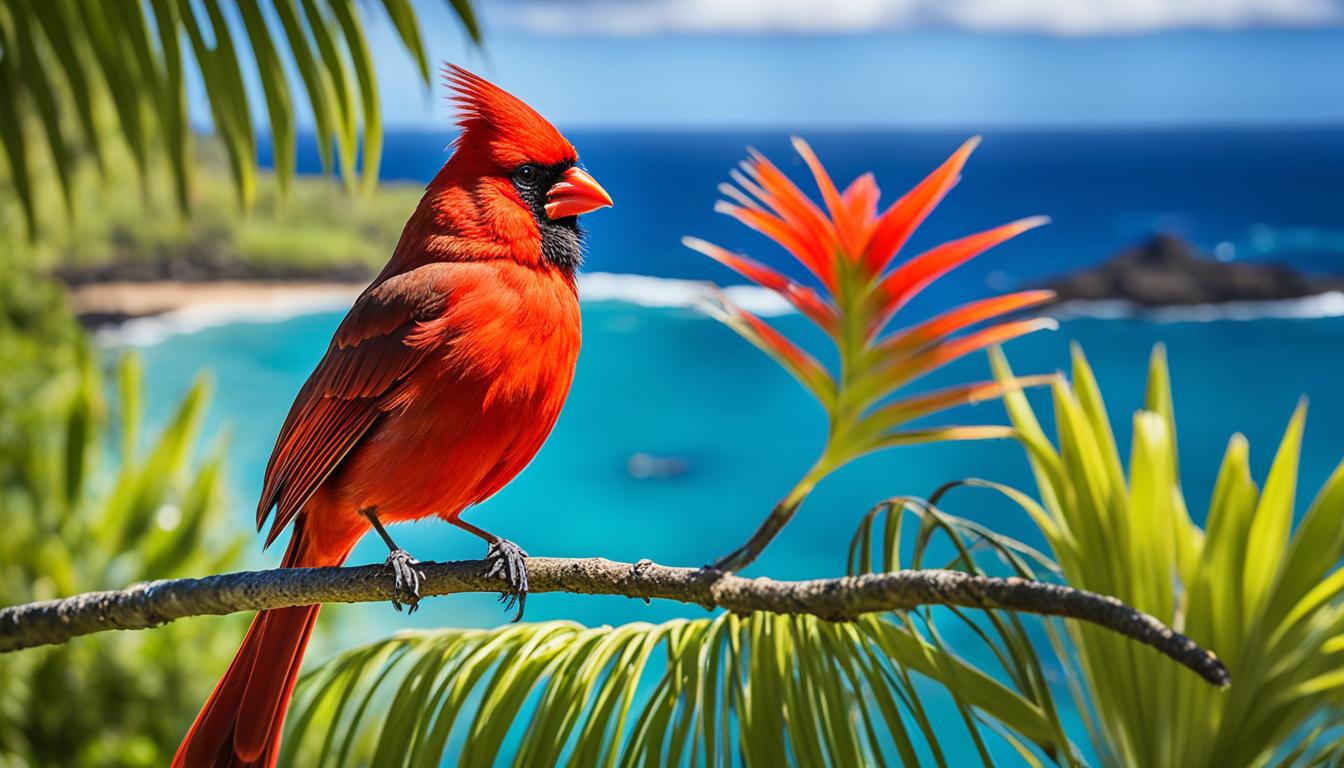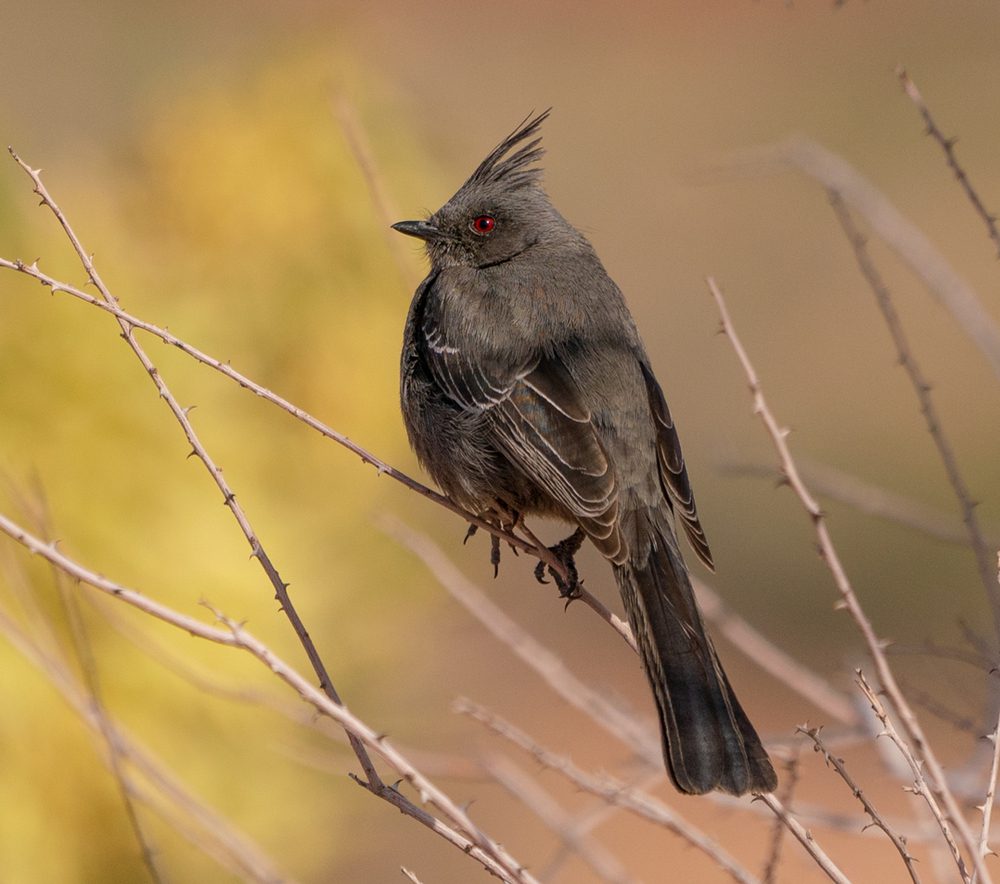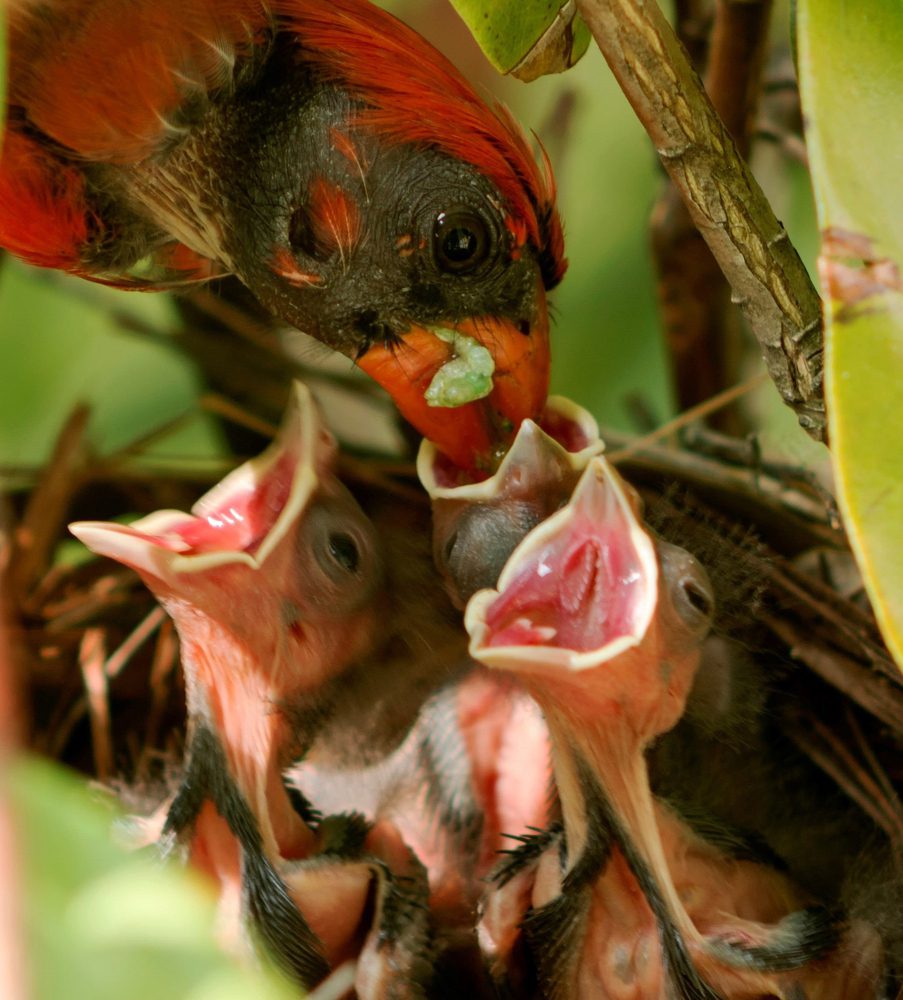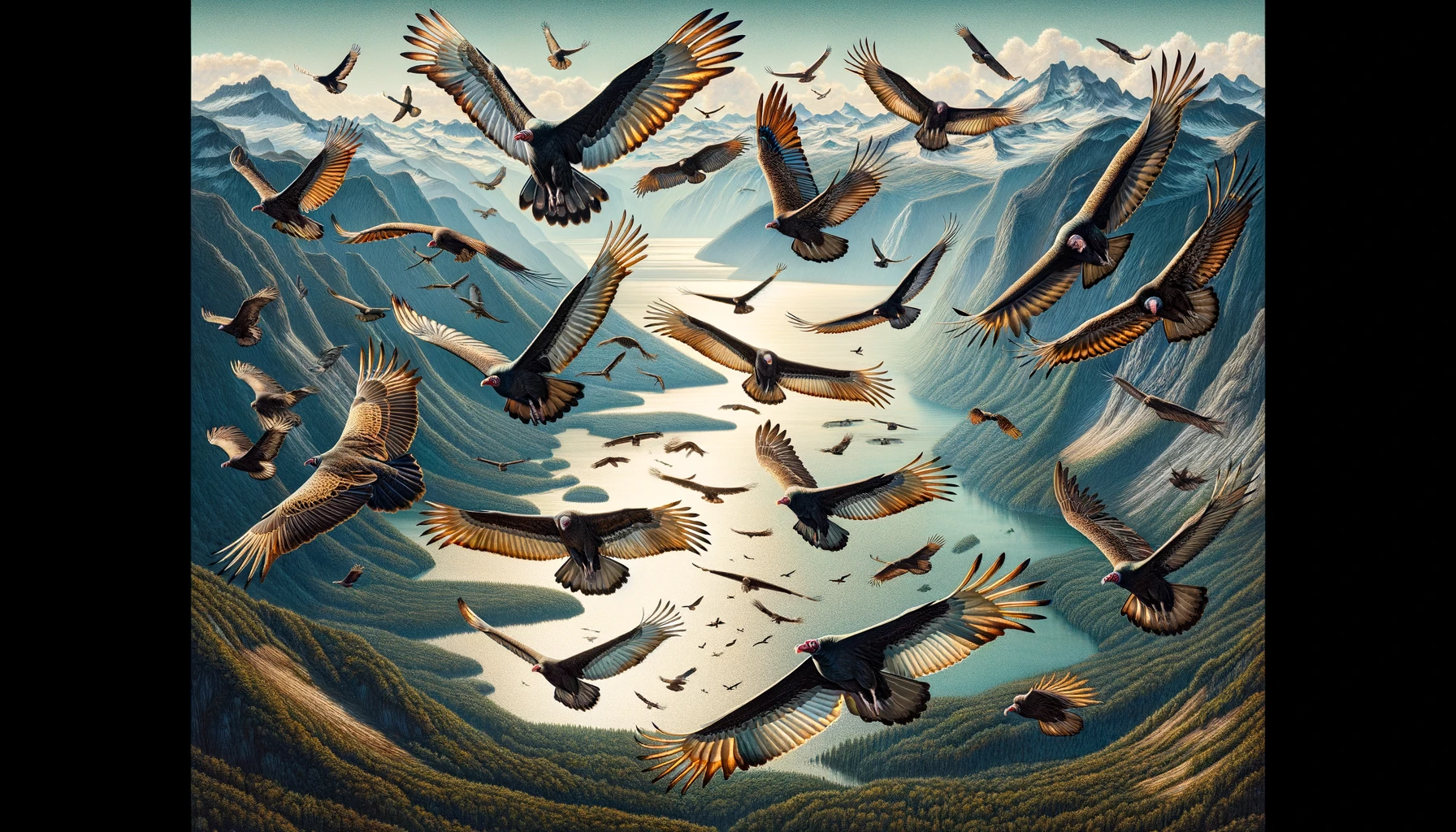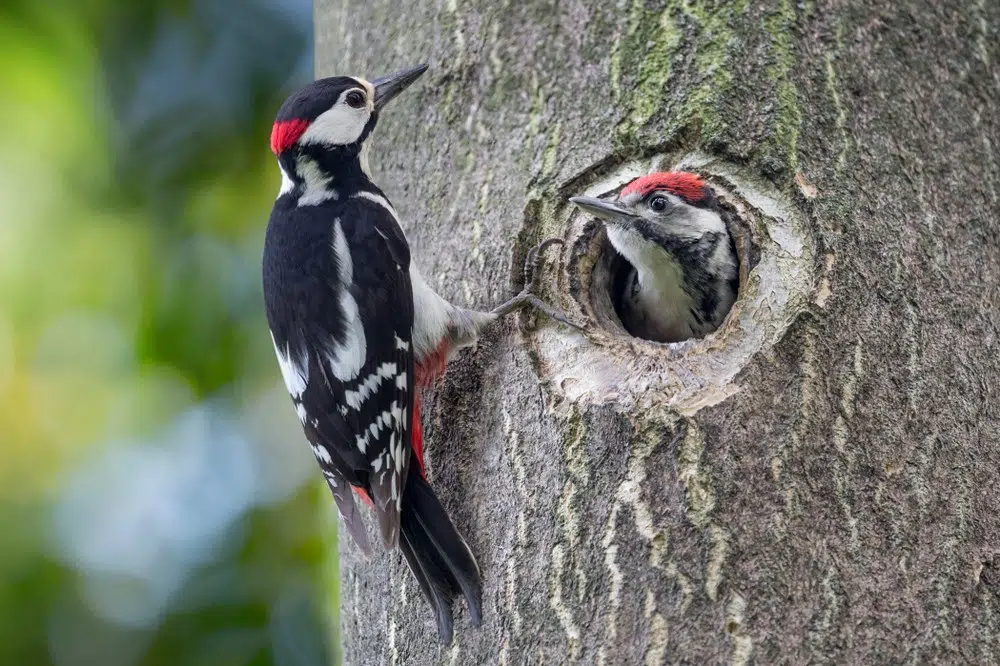
Woodpecker bird is a captivating subject that I’ve spent years studying. If you’ve been curious about the unique behaviors, habitats, and significance of woodpeckers, you’ve landed on the right page.
Through this article, I’ll address all your queries and share my in-depth knowledge about these incredible birds. Many individuals grapple with attracting or identifying different woodpecker species.
Backed by extensive ornithological research, I’m here to guide enthusiasts like you. Whether you’re an avid birdwatcher or just someone with a budding interest in nature, this piece is crafted to resonate with your passion. Join me as we unravel the mysteries of the woodpecker bird.
Every living creature regardless of its size has a role to fulfill. This includes the woodpecker often regarded as natures builder. These birds take pleasure in pecking holes in trees creating abodes not for themselves but also for various other creatures.
These holes, commonly referred to as ” cavities ” serve as nesting and resting spots, for birds, small animals and even insects. So when you observe a woodpecker rhythmically tapping on a tree trunk remember that it is not merely making noise, it is constructing homes!
Table of Contents
Woodpeckers Bird : The Busy Builders of Nature
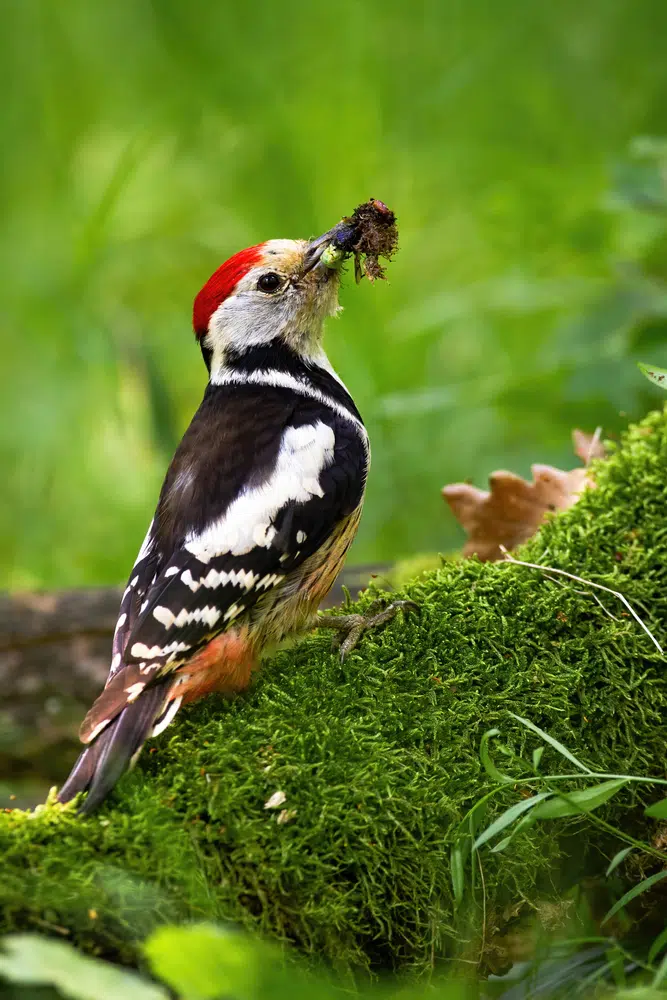
Bug Busters
In addition to their building skills woodpeckers also excel at controlling insect populations. They have an appetite for insects such as beetles, ants and minuscule creatures that reside within the bark of trees—many of which can pose threats to the well being of trees. By consuming these bugs woodpeckers play a role in maintaining the healthiness of our forests and gardens. Just imagine if we had to resort to insect sprays for this task – that wouldn’t be beneficial for nature, in any way!
Seed and Mushroom Movers
Did you know that woodpeckers also play a role, in dispersing seeds and mushrooms? When these birds feed they often end up with seeds or small fragments of mushrooms, on their beaks or feathers. As they move from one tree to another these seeds and spores get dislodged, eventually landing in locations. This process contributes to the expansion of plant and mushroom populations promoting diversity and overall health in our forests.
Forest Health Checkers
Checking the health of a forest can also be done by observing the presence of woodpeckers. When there is a population of woodpeckers it is usually an indicator that the forest is, in condition. However a low number of woodpeckers could potentially signal issues providing caretakers of the forest with an alert.
A Cool Case Study: Woodpecker Work in Pine Forests
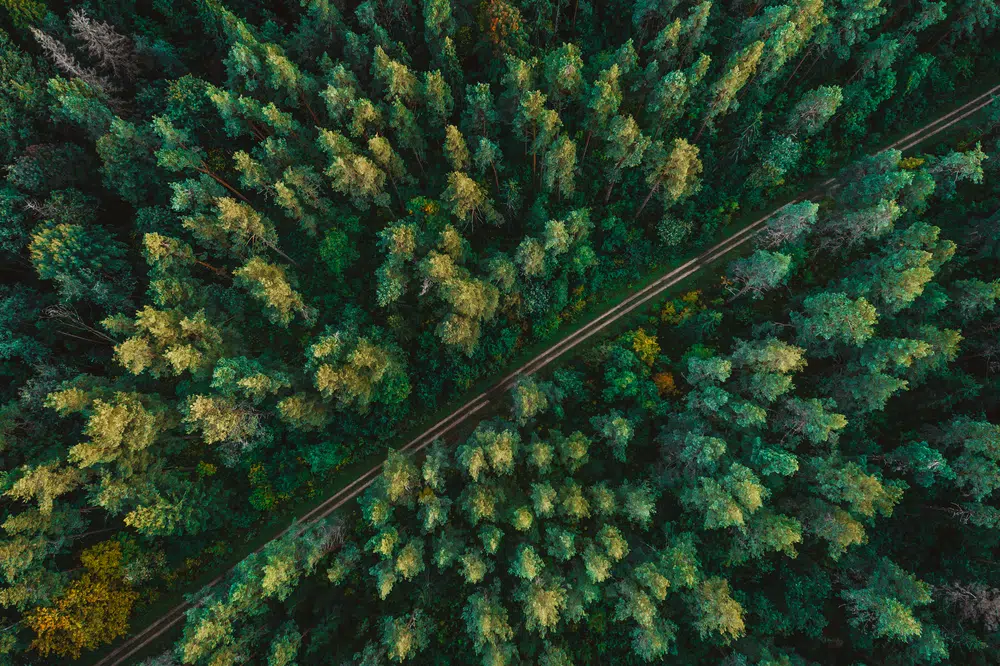
Scientists conducting research, on forests in the region of the United States have made a significant discovery regarding the crucial role of woodpeckers. Their findings reveal that these birds play a part in maintaining control over bark beetles, which pose a threat to the health of trees. This study emphasizes the importance of preserving woodpeckers and their natural habitats.
To summarize it is essential to recognize that woodpeckers are not just birds, they hold significance for our planet. They contribute by regulating insect populations facilitating seed dispersal and constructing nests within trees. So whenever you come across a woodpecker take a moment to appreciate their contributions, towards our world. Who knows you might even be inspired to grab your binoculars and embark on a birdwatching adventure!
Meet The Super Drummer of the Bird World
What Does a Woodpecker look like ?
Hey adventurers! Have you ever laid eyes on a pencil the one you use for drawing and writing? Well here’s something a woodpecker measures, up to the length of that pencil! Yes you heard me right. These petite birds may be small in size. They possess an amount of strength.
Now let me paint you a picture of a woodpecker using words. Imagine a bird adorned in a coat showcasing an array of colors. Blacks, pristine whites and even vibrant reds! Some woodpeckers sport a hat atop their heads resembling regal crowns. They truly exude the charm fit, for royalty in the realm wouldn’t you agree?
A Bird With Many Color
There are types of woodpeckers each adorned with its distinctive plumage. The Pileated Woodpecker boasts a crown, complemented by a sleek black body and white stripes resembling stylish scarves encircling its neck. On the hand the Downy Woodpecker prefers an understated attire sporting a classic black and white ensemble, with just a small red dot adorning its head like a charming little hat.
How Does a Woodpecker Behave?
- The fastest Drummer
Have you ever closed your eyes. Listened attentively? If you do you might hear a tap tap tap” sound. That’s the sound of a woodpecker drumming on a tree! They do this to locate bugs to eat, create homes inside trees, and even communicate with other woodpeckers using their unique secret language!You know what’s fascinating? A woodpecker can tap a tree up to 20 times in one second. That’s even faster, than the blink of an eye!
- Flying in Waves
When a woodpecker takes flight it doesn’t simply soar in a line, like avian creatures. Instead, it gracefully. Descends, creating a spectacle reminiscent of a roller coaster ride! This unique flying pattern resembles a captivating dance, in the sky making observing woodpeckers an experience.
Lets Go Woodpecker Watching
Lets go on an adventure of woodpecker watching! The time you’re outside. Taking a nature walk pay close attention to your surroundings. You might be lucky enough to catch a glimpse of a woodpecker, with its feathers rhythmically drumming on a tree or gracefully soaring through the sky.
Remember, the more we learn about these birds the better equipped we are to protect them and their habitats. So put on your explorer hat. Lets embark on our woodpecker watching expedition! Enjoy observing these creatures explorers!
Picture yourself in a forest at daybreak, where the gentle tapping of woodpeckers signals the start of a day. These captivating birds are not famous for their pecking behavior but also, for their vibrant feathers and unique calls that resonate throughout the woods. As we venture further into the forest lets familiarize ourselves with some of the encountered woodpecker species during our birdwatching escapades.
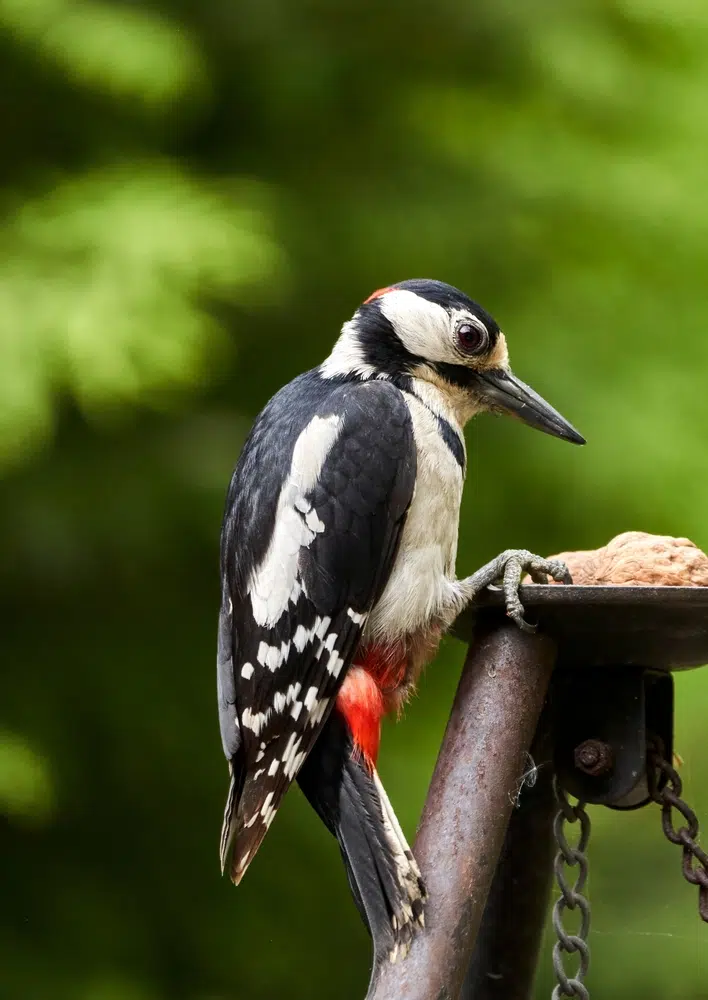
1. Downy Woodpecker
Imagine a bird, not longer, than the size of your hand rhythmically pecking away in the forest. That’s what you’ll find with the Downy Woodpecker! As the bird of its kind in North America this delightful creature showcases a black and white ensemble. The males even have a touch of red on their heads. Whether you’re exploring woodlands strolling through an orchard or simply enjoying some downtime in a park be on the lookout, for these little entertainers!
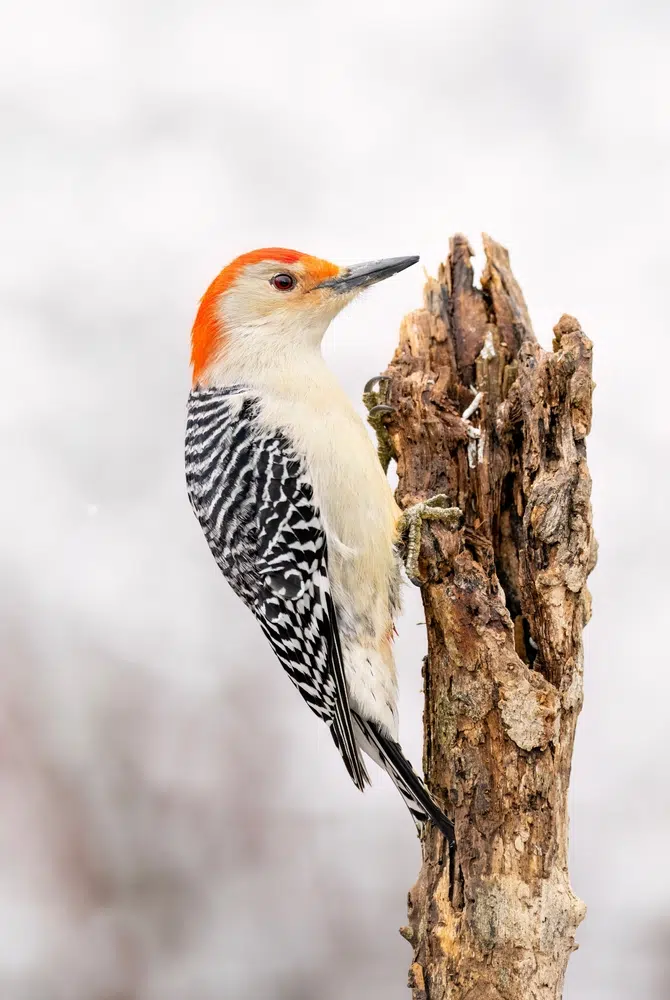
2. Red Bellied Woodpecker
Did you know that the Red Bellied Woodpecker is actually known for its cap and nape rather than its belly? These birds are slightly larger, than their Downy and Hairy Woodpecker relatives, measuring around 9.4 inches, in length. It’s common to find them in woodlands or brightening up backyards, parks and gardens with their presence.
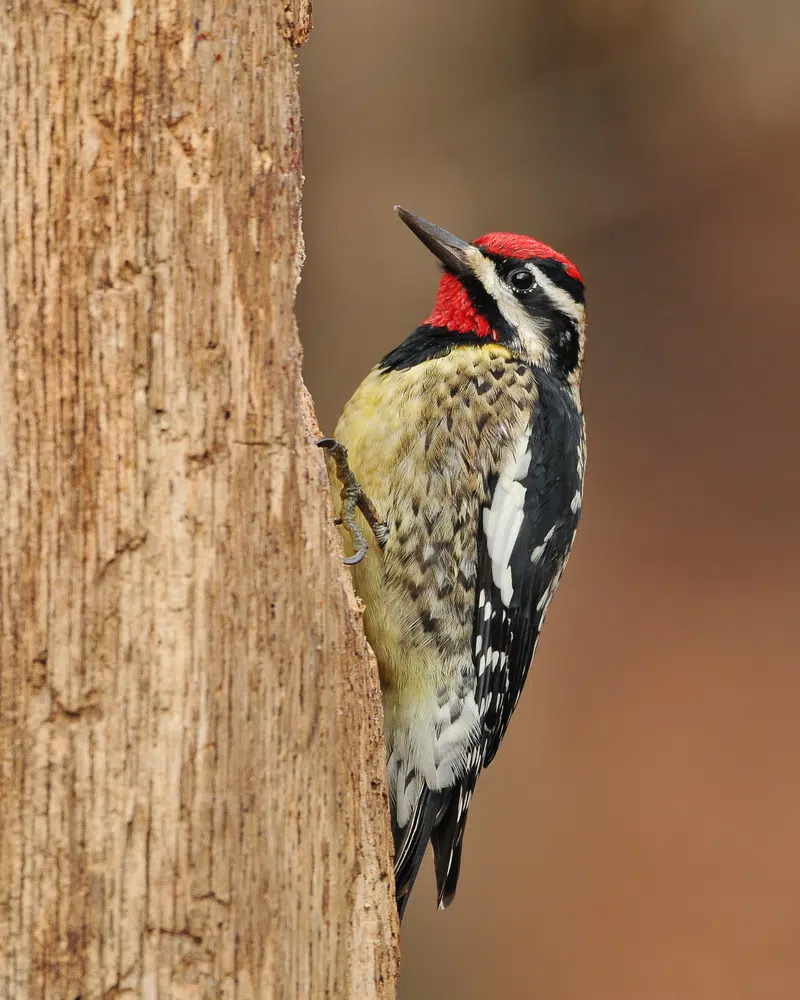
3. Yellow Bellied Woodpecker
Imagine strolling through the forest and stumbling upon a tree adorned with rows of holes an unmistakable sign of the Yellow Bellied Sapsuckers. These fascinating birds have their way of finding sustenance – they feast on the sap of trees. With precision they drill rows of holes into tree barks causing a flow of sap that they eagerly consume. These captivating creatures, measuring around 7.5 inches long are truly a sight to behold with their foreheads beautifully contrasting against their yellow bellies. Their unique feeding behavior not nourishes them. Also provides nourishment for other animals showcasing a remarkable example of natures interconnected ecosystem.

4. Pileated Woodpecker
Imagine a bird, not longer, than the size of your hand rhythmically pecking away in the forest. That’s what you’ll find with thePicture yourself strolling through a forest in North America, surrounded by the tranquil sounds of nature. Suddenly a powerful call reverberates through the trees catching your attention. You glance upward. Catch a glimpse of the Pileated Woodpecker. This remarkable bird is one of the woodpecker species in our region with some individuals measuring a 19 inches long.One cannot.
Be captivated by its appearance – the bold red crest that adorns its head stands out beautifully against its predominantly black body. However it’s not their looks that make them fascinating, their behavior is equally intriguing. These woodpeckers are renowned for their adeptness in drilling holes into trees with impeccable precision and strength. It’s not a display of power, it’s also a hunting strategy to uncover their favorite meal – insects hiding beneath the bark.As you witness this awe inspiring bird in action you’ll find yourself entranced by its presence and the crucial role it plays within the forest ecosystem. By controlling insect populations and creating habitats for species through its drilling activities this creature truly leaves a mark.
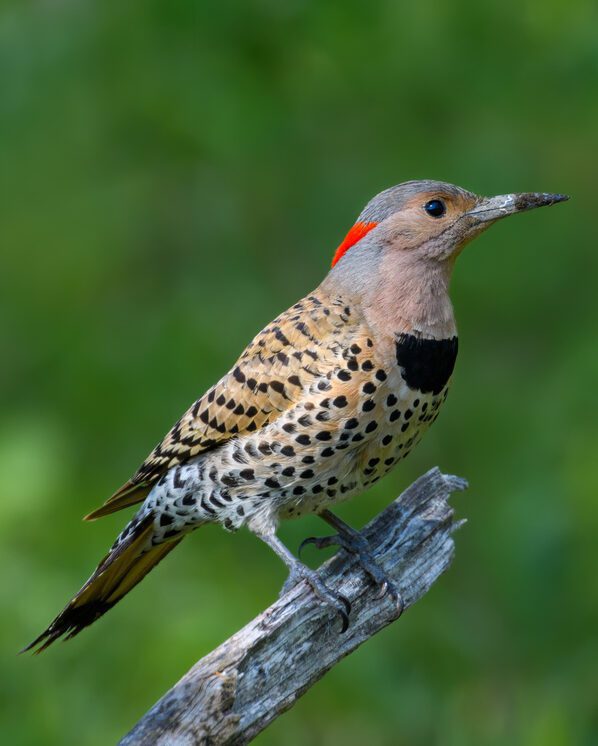
5. Northern Flicker
Let me introduce you to the Northern Flicker, a woodpecker that stands out from its birds not because of its medium to large size that reaching up to 12 inches, but also due to its unique dining preferences. Unlike woodpeckers that peck trees, this bird has a fondness for searching for food on the ground, where it happily feasts on ants and beetles. When you come across a bird with a body adorned with a striped back and speckled underparts you’ll instantly recognize it as a Northern Flicker. Their distinctive appearance adds an element during your walks, in nature bringing about a sense of awe as you witness their ground feeding behavior firsthand.
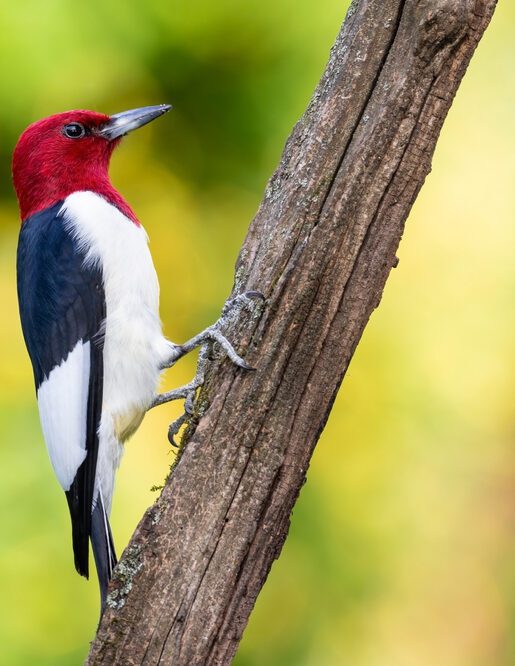
6. Red Headed Woodpecker
Red-headed woodpeckers have bright red heads, just like their name suggests! They are about as long as a ruler and are brave birds. They stand up to more giant birds to protect their space. You can often find them in places with lots of trees, like forests, orchards, or even near roads.
Unraveling The Mystery of Woodpeckers: A Personal Encounter
A Symphony of Pecking Sounds
Living in Indiana is impossible to ignore the orchestra of nature. Amongst the melodies of chirping birds there’s one sound that captures attention – the rhythmic tapping of woodpeckers. It’s an enigmatic sound. Have you ever wondered what these diligent birds are up, to? Why do they peck away with determination?
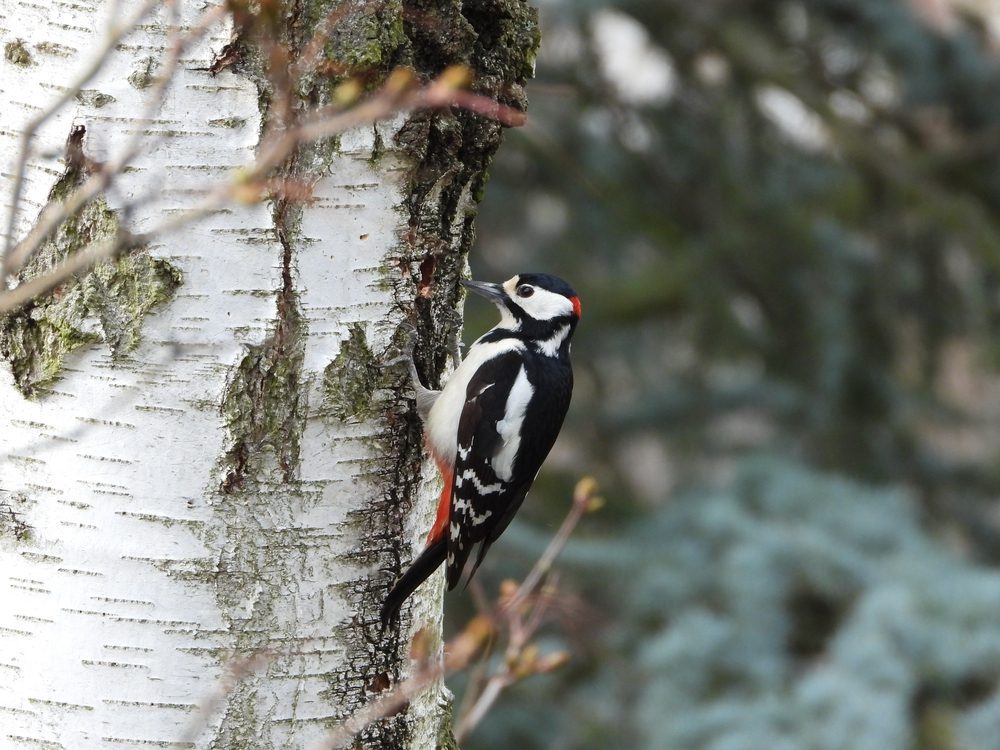
The Woodpecker Encounter
On a morning equipped with my binoculars and an insatiable sense of curiosity I set out to uncover the enigma surrounding these fascinating beings. A distance, from my brothers house I came across a Downy Woodpecker diligently tapping away at a tree trunk.
The Purpose of Pecking
Woodpeckers peck for reasons as stated by experts, from AllAboutBirds. One of the purposes is, for finding food. Woodpeckers are predators. Use their sharp beaks to uncover insect larvae that are concealed within tree barks.
A Survival Strategy
It’s quite fascinating how pecking plays a role, in the woodpeckers survival strategy. The rapid and rhythmic drumming sound created by their pecking serves as a signal to woodpeckers. It’s, like a warning sign saying, “Stay ” and it effectively tells other birds to avoid entering the claimed territory.
The Woodpecker’s Adaptations
It’s truly remarkable how woodpeckers are specifically designed to endure the pecking. As stated in a study published in the Journal of Zoology woodpeckers possess a muscular structure that effectively absorbs the impact, from each peck safeguarding their brains from injury.

The Nesting Habits
While I was watching this Downy Woodpecker, I couldn’t Notice how often it visited a hole, in the tree. After doing some research I discovered that woodpeckers peck at trees to make nests. They skillfully create homes within the trunks offering protection, for their eggs and little ones.
The Key Takeaways
My encounter, with a Downy Woodpecker in Indiana taught me a lesson about the strength and adaptability of nature. Here’s what I learned from this experience.
- Pecking is more than a habit, it’s a survival technique. Woodpeckers use pecking to find food establish their territory and build nests.
- Nature has an ability to bounce back. Woodpeckers have evolved to withstand the impact of their pecking.
- Bird watching is a journey of exploration. Each interaction, with a bird presents an opportunity to gain knowledge.
Natural Habitats of Woodpeckers
Woodpeckers are birds that captivate bird enthusiasts with their rhythmic pecking sounds and colorful feathers. If you’ve ever been curious, about where these special birds choose to make their homes you’ve come to the spot. Learning about the habitats of woodpeckers can enhance your enjoyment of bird watching. Offer valuable knowledge, about these amazing avian creatures.
Forests and Woodlands
Woodpeckers primarily inhabit forests and woodlands. When you wander through these sanctuaries it’s quite common to hear the distinct sound of a woodpecker diligently pecking away.
Deciduous Forests
Deciduous forests, known for their trees that lose their leaves every year are particularly beloved by woodpeckers. These forests offer food sources, like insects, nuts and berries. The tender bark of trees also facilitates woodpeckers pecking and the creation of cavities.
Coniferous Forests
Woodpeckers are often drawn to forests, where trees, like pines and firs prevail. These trees provide an abundance of insects in their bark and cones making them a reliable food source for woodpeckers. Additionally the dense foliage of these forests offers protection, from predators and adverse weather conditions.
Mixed Forests
Mixed forests, which consist of both coniferous trees provide an environment for woodpeckers. They offer a range of food choices suitable locations for adequate shelter thereby, creating perfect habitats for these birds.
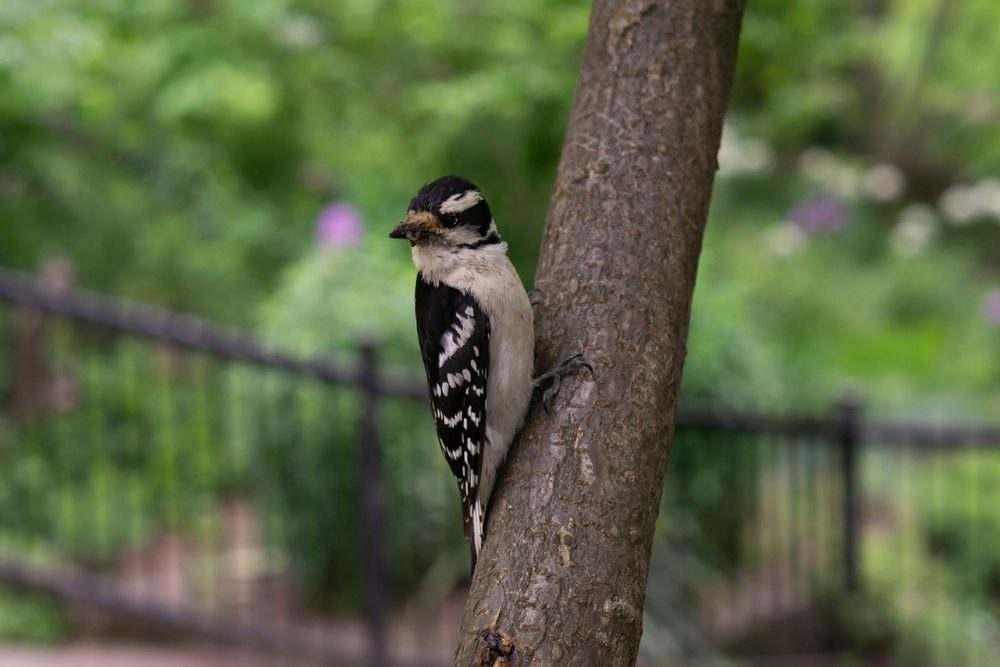
Backyard As Your Personal Birding Paradise
It’s quite amazing how your own backyard can become a haven, for woodpeckers. You might just be fortunate enough to catch a glimpse of types of these birds right from the comfort of your very own home. Here are some simple steps you can take to make your backyard more enticing, for these feathered visitors.
Plant Native Trees
Planting indigenous trees is a guaranteed method to draw woodpeckers. These trees create a habitat, for insects, which act as a natural food source for woodpeckers. Additionally grown trees with their trunks and branches offer ideal locations, for nesting.
Install Bird Feeders
Woodpeckers can be attracted to your backyard by using bird feeders that are filled with food they enjoy such, as suet, peanuts and sunflower seeds. Just make sure that your feeder is strong enough to handle the size of woodpeckers compared to songbirds.
Provide a Water Source
A birdbath or a small pond can serve as a sanctuary, for birds including woodpeckers. They not only provide a water source for drinking. They also offer a space where birds can indulge in bathing and grooming their feathers.
Leave Dead Trees Standing
If its safe it’s actually beneficial to keep dead or dying trees standing in your yard. These trees act as a source of food, for woodpeckers as they search the bark for insects and larvae. Moreover they provide spots for nesting and resting.
To sum up having an understanding of woodpecker habitats can greatly enhance your bird watching experience. Whether you’re exploring the outdoors or simply enjoying the view from your backyard being knowledgeable about these habitats can increase the likelihood of spotting these captivating birds. So grab your binoculars step and let the adventure in birdwatching begin!
Understanding Woodpecker Habitats: A Look into Seasonal Changes
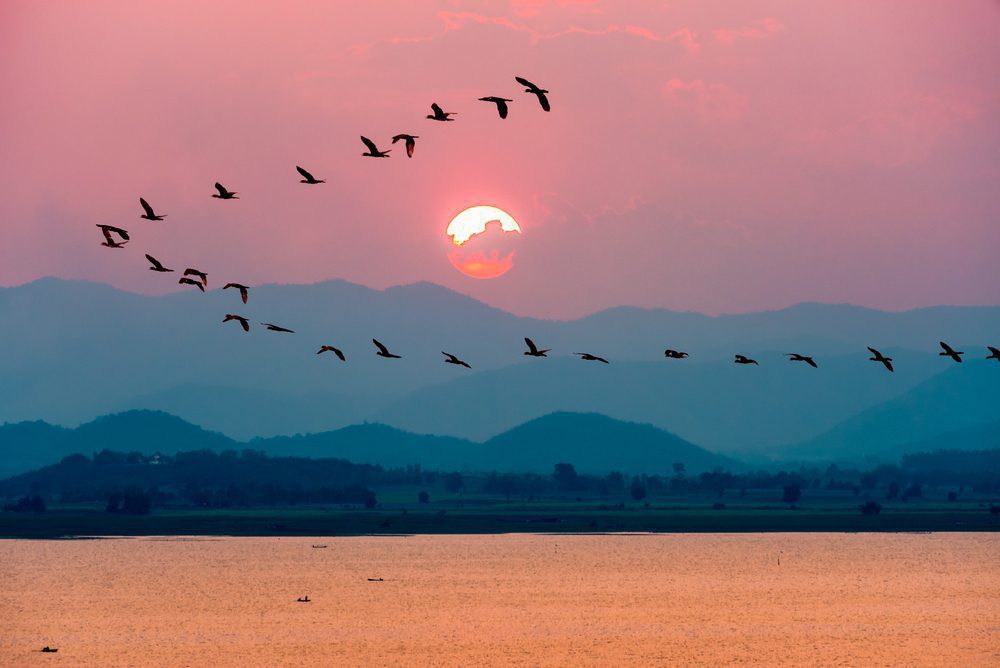
When we imagine woodpeckers we often envision them tapping on tree trunks in a forest. However it’s interesting to note that woodpeckers are birds that can thrive in various environments. Similar to humans they adjust their living conditions according to the seasons. In this section we will explore the captivating realm of woodpecker habitats. How they transform throughout the year.
Woodpecker Habitats: A Broad Overview
Lets start by getting acquainted with our subject. Woodpeckers are known for their behavior of drilling into tree trunks to find insects, for food create sites or communicate with one another. This behavior isn’t a quirk, it’s actually a survival strategy that has influenced their preferences for habitats.
Woodpeckers can be found in a variety of habitats including:
- Forests: This is the habitat for woodpeckers. They are drawn to trees that offer ample opportunities for finding food and building nests.
- Woodlands: These habitats offer an environment to forests. Are often less densely populated, with trees.
- Suburban and Urban Areas: Surprisingly woodpeckers can adapt to environments well particularly in areas where mature trees are plentiful.
Woodpecker Habitats and Seasonal Changes
Now lets discuss the impact of seasons, on the habitats of woodpeckers. Understanding these changes can help us anticipate their behavior and improve our chances of observing these captivating birds.
- Summer: During these seasons there is an abundance of insects creating a feeding and breeding period for woodpeckers. They typically remain in the vicinity nesting in tree cavities that they have excavated.
- Fall: As temperatures begin to cool down insects become less active requiring woodpeckers to adjust their feeding strategies. Certain species like the Downy Woodpecker start consuming plant matter such as berries and a corns.
- Winter: In regions some woodpeckers may migrate distances, in search of food while others choose to stay put. They rely on insect larvae found within tree trunks or suet from bird feeders for survival.
Migration Patterns of Woodpeckers
It may come as a surprise to many that certain woodpeckers actually engage in behavior. While not an occurrence, species such, as the Northern Flicker and Yellow bellied Sapsucker have been observed migrating to the regions of the United States or even as far, as Central America. This migration serves as a means to escape the winter conditions and seek out plentiful food sources.
That being said it is important to note that the majority of woodpecker species are considered non migratory. These particular species have adapted well to their surroundings that they are able to find food and shelter to endure the winter season. Examples of these migratory woodpeckers include the Hairy Woodpecker and Red bellied Woodpecker.
Creating Woodpecker-friendly Habitats
As enthusiasts of birds we have the opportunity to contribute to the well being of our feathered companions all year round. Here are a few suggestions, for creating an environment for woodpeckers:
- Install a Suet Feeder: Woodpeckers are particularly fond of suet, which offers them a high energy food source during winter when insectsre scarce.
- Plant Native Trees: By planting trees that’re native to our area we can provide woodpeckers with sources of food and suitable places for nesting.
- Preserve Dead Trees: Whenever possible and safe to do leaving trees standing can offer great nesting and foraging opportunities, for various woodpecker species.
So the time you come across a woodpecker diligently pecking away at a tree trunk remember that this simple behavior is actually an intricate survival strategy influenced by seasonal changes. Understanding these dynamics not enhances our enjoyment of birdwatching. Also enables us to support these remarkable birds throughout the entire year. Happy birdwatching!
Engaging With The Birding Community: Learn, Share, and Experience

Birdwatching goes more than a hobby, it’s a way of life that connects us to nature and fellow bird lovers. Just like birds gather together, so do people who enjoy birdwatching. In this section we will delve into the joy of being part of a community in birdwatching, and how sharing our experiences can enrich our knowledge and passion for this pursuit.
Joining the Flock: Online Communities and Platforms
When it comes to birdwatching, there’s something about learning from fellow enthusiasts just like stumbling upon a rare bird in your own backyard. The birding community is incredibly diverse and expansive, filled with individuals to share their knowledge and experiences.
One platform that our audience particularly enjoys is Reddit, a treasure trove of anecdotes helpful tips and valuable insights from birders around the world. Subreddits, like r/birding or r/BirdPhotography are starting points. They provide an opportunity to ask questions, share your sightings, and engage in discussions centered around all things related to birds.
Spreading the Wings: Sharing Your Birding Experiences
Sharing your experiences of birdwatching not ignites your enthusiasm. It also has the power to inspire fellow birding enthusiasts. Let me provide you with a suggestions, on how you can contribute to the vibrant birding community.
Creating a Bird-Friendly Backyard
Creating a bird paradise, in your backyard is truly an adventure. One way to achieve this is by setting up bird feeders and houses which will attract a range of bird species, including the enchanting woodpeckers.
Transforming your yard into a haven for birds goes beyond providing food and shelter, it’s also about making a commitment to sustainability and conservation. Planting trees and avoiding the use of pesticides can greatly contribute to creating an environment for these beautiful feathered visitors.
To inspire others to follow in your footsteps consider sharing your journey towards a bird backyard on online platforms. You could showcase, before and after photos share your do it yourself birdhouse designs or even start a blog where you document your progress along the way.
Bird Photography: Capturing the Beauty of Birds
Bird photography is a way to document the experiences you have while birding. It can be quite challenging. The satisfaction of capturing that perfect shot of a woodpecker rhythmically drumming on a tree or a cardinal gracefully soaring through the air is truly rewarding.
If you’re new to bird photography and keen to share your shots, consider platforms like Instagram or Flickr. These platforms provide opportunities to showcase your work and contribute to communities dedicated to birding. Communities on Reddit and Facebook are also places where you can connect with enthusiasts, inspire others with your photos, and help people identify different bird species with visual references.
Moreover don’t hesitate to share your knowledge by offering tips and tutorials on bird photography. From camera settings that work best for capturing birds in motion, to techniques for getting those shots, sharing your insights can play a role, in helping others improve their skills in this captivating field.
The Joy of Birding: A Recap
Engaging with the birding community has the potential to enhance your bird watching adventures, foster an understanding, and admiration for our feathered friends. By becoming part of platforms like Reddit you can connect with bird enthusiasts gain insights from their experiences and share your own.
Creating a backyard that is welcoming to birds can attract a range of species and contribute to conservation initiatives. Sharing your journey online can inspire others to embark on endeavors.
Bird photography enables you to capture the beauty of birds and showcase your sightings to an audience. Providing tips and tutorials can assist others in refining their photography skills while deepening their appreciation for these creatures.
Closing Thoughts
The realm of birdwatching is as vast and lively as the captivating birds themselves. It forms a knit community united by a shared love for nature and a thirst for knowledge, camaraderie, and awe-inspiring encounters with feathered creatures.
Whether you’re a birder or embarking on this journey, we wholeheartedly encourage you to delve into this captivating world, engage with like-minded enthusiasts, and share your birding experiences. Each bird’s melodious song adds harmony to the symphony of nature.
As we continue to expand our understanding and nurture our passion for observing birds, let us remember that we are more than spectators, we are also caretakers. Together, let us strive to safeguard their habitats and ensure that forthcoming generations can revel in the splendor and enchantment of birdwatching.

